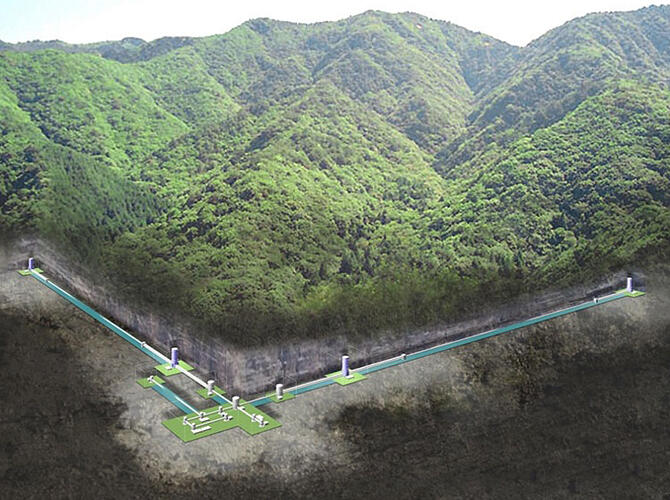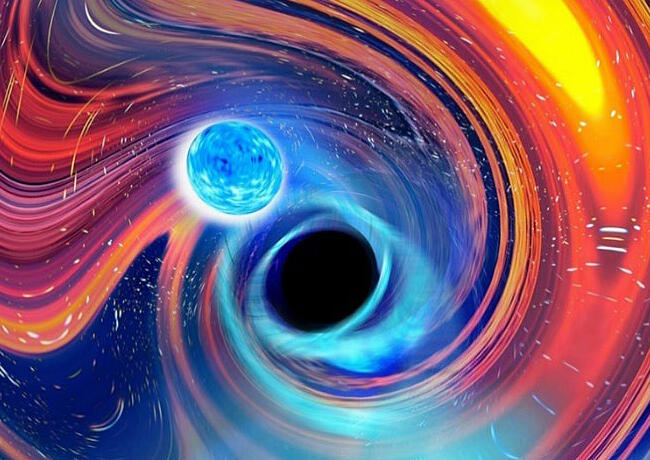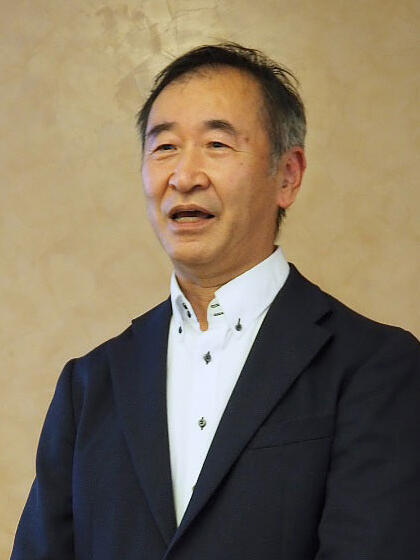The 'KAGRA' observation facility in Hida City, Gifu Prefecture, was constructed to detect subtle space distortions known as 'gravitational waves' originating from the far reaches of the universe. This facility resumed joint international observations for the first time in three years on the early morning of May 25. The Institute for Cosmic Ray Research (ICRR) at the University of Tokyo, announced this recommencement. KAGRA is a large-scale underground telescope dedicated to the study of black holes and other phenomena. However, thus far, it has failed in successfully detecting gravitational waves owing to insufficient sensitivity. Based on previous observations, a research team identified the causes of observational noise, which was stronger than expected, and improvement measures have since been implemented. Professor Takaaki Kajita who leads the research team at the Institute, enthusiastically stated, "We would like to achieve sufficient sensitivity to capture signs of gravitational waves by spring next year."

(provided by the Institute for Cosmic Ray Research (ICRR), the University of Tokyo)
'Ripples through time and space' in the Kamioka mine
Gravitational waves are described as ripples through time and space. The gravity of an object distorts the space around it. When an object moves, distortions in the form of ripples propagate at the speed of light. These ripples are gravitational waves. Based on his theory of general relativity, Albert Einstein first predicted the existence of gravitational waves in 1916.
Since then, efforts to detect gravitational waves produced by the mergers of heavy celestial bodies, such as black holes, have been underway. In 2015, the Laser Interferometer Gravitational-Wave Observatory (LIGO), consisting of two observation facilities in the United States of America, succeeded in the first detection of gravitational waves. In 2017, three members of the LIGO team were awarded the Nobel Prize in Physics. Since then, LIGO and the European-based 'Virgo' have collaborated to detect 90 instances of mergers of black holes; coalescence of 'neutron stars,' which are the final stages of some stars; and gravitational waves produced by the mergers of black holes and neutron stars.
Triangulation using multiple gravitational-wave telescopes is essential to determine the incoming direction of gravitational waves. Thus, to improve the detection accuracy, another telescope in addition to the LIGO and Virgo may be beneficial. The University of Tokyo took initiative in excavating an underground tunnel, approximately 200 meters in length, in the mine of Kamioka Town, Hida City, to construct KAGRA. KAGRA is designed to detect gravitational waves based on the time lag between laser beams that are emitted in two directions from the center of an L-shaped structure, each side of which is 3 km long, and are reflected back by mirrors. The construction of KAGRA was completed in the spring of 2019, incurring a construction cost of approximately 16.4 billion yen. Around 150 researchers from eight different countries and regions contributed to the writing of scientific papers reporting on the observations. The 'KA' in KAGRA is derived from KAmioka and the 'GRA' from GRAvity. The name also refers to Kagura, a ritual dance dedicated to the gods.
Kajita explained, "The location of KAGRA in East Asia is extremely important for determining the incoming direction of gravitational waves. The need for international observations has long been recognized." Kajita was awarded the Nobel Prize in Physics in 2015 for his research on elementary particle neutrinos.

(provided by Carl Knox, Swinburne University of Technology, Australia)
New tools for understanding the universe
Even children with a love for astronomy can peer through an astronomical telescope. Observations of distant visible light were first initiated in the 17th century by Galileo, the father of astronomy. However, in the 20th century, observations of the universe by capturing X-rays, radio waves, and even neutrinos originating from celestial bodies were made possible. The research field unifying the characteristics of such observational tools and combining their results to deepen our knowledge of the universe is called 'multi-messenger astronomy.' The current 21st century has witnessed the emergence of an additional field 'gravitational wave astronomy,' in which gravitational wave telescopes, such as KAGRA, are used.
Kajita highlighted three major mysteries of the universe to be investigated using gravitational waves:
- (1) It is now almost evident that heavy elements, such as gold and platinum, are produced through the coalescence of neutron stars. The group would like to collect further observational data to confirm this finding.
- (2) The actually observed black holes are much heavier than expected, and they would like to investigate their formation mechanisms.
- (3) The mechanism underlying 'supernova explosions,' caused by stars with more than eight times the mass of the Sun, remains poorly understood. They would like to understand the phenomena occurring at the centers of stars by examining the motion of matter based on gravitational-wave observations, investigating the temperature with neutrino observations, and linking the results.

"It is not that easy."
After KAGRA was set up, adjustments were made to allow joint observations with LIGO and Virgo, thereby achieving the required sensitivity specified in the participation condition in March 2020. however, owing to the COVID-19 pandemic, LIGO and Virgo suspended their observations, complicating the intended collaboration with KAGRA. Under these circumstances, KAGRA conducted a joint observation with a German facility in April 2020. However, this was also terminated owing to the pandemic after only two weeks. During this operation period, the noise impeding KAGRA's sensitivity was found to be greater than expected. To prepare for the recommencement of joint observations, the research team investigated the causes and attempted to improve the sensitivity by reinstalling and adjusting an anti-vibration device supporting the mirror, implementing measures to mitigate light scattering, and improving the optical system.
The joint observations resumed at 12 am (Japan Standard Time) on May 25. According to the intended plan, KAGRA will firstly conduct observations over one month. However, the current sensitivity is still insufficient to observe gravitational waves. After subjecting the instruments to readjustments based on one-month observational results, KAGRA will resume its operation in the spring next year for a three-month observation period. At this stage, the goal is to achieve the sensitivity required to capture signs of gravitational waves generated by the coalescence of neutron stars. KAGRA and LIGO will be employed for observations at the beginning of the operation recommencement, whereas Virgo with some identified defects will continue to undergo adjustments for the time being.
The current sensitivity level of KAGRA differs considerably from that of LIGO and Virgo, which have proven track records and are ahead of KAGRA. However, bridging this gap would require a long time. Kajita stated, "Both LIGO and Virgo have taken a considerable amount of time to improve their sensitivity and achieving the required sensitivity for KAGRA also appears to be more challenging than initially expected. KAGRA has not taken significantly longer than the other facilities to improve its sensitivity. We will try our best, but improving KAGRA rapidly will be difficult."
Living up to the expectations of the 'LIGO−Virgo−KAGRA (LVK)' collaboration
The aim is to further increase the sensitivity of KAGRA before the next international observation, which is expected to begin around 2027, and to contribute to improvements in the accuracy of detecting the incoming direction of gravitational waves using KAGRA.
In November 2015, when the construction of KAGRA achieved a milestone, journalists, including the author, visited the mine. Compared to the expectations of researchers in those early days, including statements such as "once we enter full-scale observations, we will detect gravitational waves within a year," the current expectations of researchers appear to lack some enthusiasm.
However, the documents related to LIGO and Virgo mention the 'LIGO−Virgo−KAGRA (LVK) collaboration' prominently, already setting high expectations for KAGRA. On the path to big science, hardships and initial miscalculations should not necessarily be viewed as drawbacks. At times, the very process of improvement can lead to a mastery in the field under question. We await the day when Einstein will smile down from the heavens onto Kamioka.

(provided by the Institute for Cosmic Ray Research (ICRR), University of Tokyo)
(KUSAKA Takeo / Science Portal Editorial Office)
Original article was provided by the Science Portal and has been translated by Science Japan.




